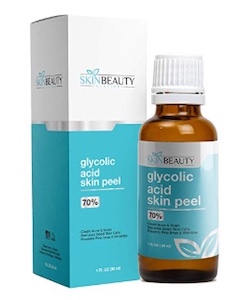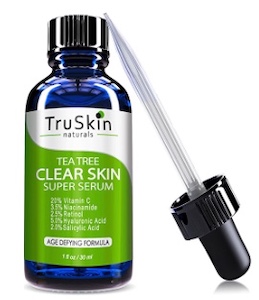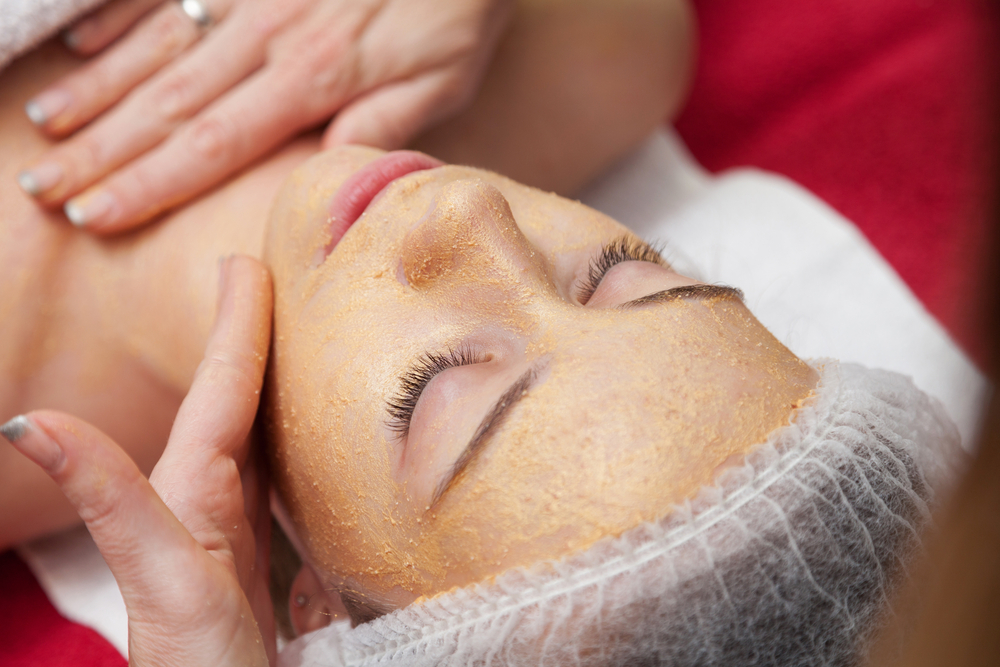- TCA peels use trichloroacetic acid to remove the top layer of skin, and come in a variety of concentrations.
- Downtime can vary from none at all to three weeks, depending on the intensity of the peel.
- TCA peels can burn or sting, but the pain doesn’t usually last beyond the duration of the treatment.
What is a TCA peel?
TCA is the abbreviation for trichloroacetic acid, a chemical commonly used in a wide range of chemical peels. TCA peels use a type of acid that can be customized to a variety of applications and strengths, from a quick lunch-break treatment to a complete restart for your skin.
“Trichloroacetic acid is a derivative of acetic acid (vinegar) and is used to remove the top layer of cells for a smoother, clearer complexion,” explains Dr. Rhonda Q. Klein, MD, MPH, FAAD, of Modern Dermatology in Westport, CT.
Among the conditions that can be treated with TCA are melasma, sun damage, actinic keratoses, lentigos, texture, and rhytides.
“The strength of TCA depends on what condition is being treated,” says Dr. Klein. Medium and deep peels, including those that involve TCA, usually require a week or two of downtime as the old skin peels off.
What are TCA peels used for?
- Brown spots and age spots
- Sun damaged skin
- Hyperpigmentation
- Melasma
- Acne and acne scars
How does a TCA peel work?
TCA acts on keratin, a common protein found in the skin, hair, and nails. The chemical denatures the keratin proteins — in other words, removes their outer structures — which causes them to stop functioning correctly, lightening the skin and making the top layers peel off.
“I describe it to patients as being similar to what heat does to the albumin protein in the clear part of an egg. Just like the cooked egg, the skin protein turns white when the protein is denatured,” explains Dr. Cynthia Bailey, a board certified dermatologist based in Sebastopol, CA.
“We can actually see it when we apply TCA. The degree of white we create with application correlates to the depth of the peel, giving us a visual measure of control.”
Dr. Bailey describes the delicate balance of the injury and renewal cycle in gauging a peel’s effectiveness:
“The deeper the peel, the more substantial the injury we create,” she says. “Denaturing keratin protein creates an injury. As the skin heals, new collagen is created. It’s the new collagen we are really looking for when we are treating fine lines and wrinkles, but we don’t want to create such a deep injury that we heal with the ultimate in collagen formation: a scar.”
Different levels of TCA peels
TCA peels vary in strength and results depending on the concentration of acid used.
While at-home TCA peels are available, Dr. Jennifer Haley, a board-certified dermatologist and former VIP dermatologist consultant to the U.S. Capitol, recommends that any TCA concentration over 20% should be applied by a board-certified dermatologist to prevent unwanted side effects or too much peeling.
“I have seen many patients scarred from improper treatment by unqualified individuals over the years,” she cautions. “Results depend on the person performing the peel and the strength of the peel.”
A peel with TCA concentration in the 20 % range can be applied to the neck, décolletage, hands, and arms to help sun damaged or aging skin.
Peels with TCA concentrations up to 35% should only be applied to the face, and can be used to treat deeper wrinkles and precancers.
A lighter peel or a series of lighter peels are a good option if you don’t want or can’t afford days of downtime. Deeper peels often require a week or more of downtime as the skin peels off and then renews itself, and can only be done once annually.
Many factors affect the depth of a TCA peel, and it can be customized for different individuals and skin issues.
“Depth is determined by how well you remove all skin surface oils with your prep, whether you exfoliate the skin first — which will make the peel much deeper and harder to control — how many layers of application you do, and what concentration of TCA you start with,” explains Dr. Bailey.
>> Learn more about the different types of chemical peels, including their side effects, cost, and aftercare
Can TCA peels be done at home?
While superficial peels, such as glycolic and salicylic acid peels, do not require much downtime and may be appropriate for use at home, TCA peels should only be administered by skin care experts.
Purchasing inexpensive TCA peels on Amazon and other websites may be appealing from a cost perspective, but it’s generally not recommended.
This is because TCA peels are considered medium to deep peels and therefore have considerably higher downtime (usually a week or more) and higher risk profiles, according to New York dermatologist Suzanne J. Friedler, MD.
“These peels should only be done at a dermatologist’s office, under direct supervision of the dermatologist,” she says. “I would not recommend purchasing TCA peels on Amazon or even at a spa. Serious complications from TCA peels include permanent discoloration of the skin and scarring.”
Some dermatologists feel that all forms of chemical exfoliation (i.e. not just TCA peels) should be performed only by a dermatologist or licensed skin care professional.
“The abundance of options we are confronted with each day through online platforms can be overwhelming and it can be difficult to know which product is authentic,” says Eve Lupenko, MD, also a New York-based dermatologist. “Using online products may result in unwanted irritation and damage to your skin.”
Lupenko recommends the VI Peel and the Vitalize Peel Group by Skin Medica, which are office-based treatments performed in a series. As she explains, the series provides a graduating process where patients start with a minimal chemical exfoliation until their skin can tolerate a more aggressive treatment.
“There are many topical exfoliants and some can actually aggravate certain skin conditions,” Lupenko says. “This is why starting slowly with a licensed skin care professional can keep unwanted reactions from occurring in the first place.”
To understand which type of TCA peel might be right for your skin type and condition, you will need to speak directly with a board certified dermatologist.
What areas can be treated with TCA peels?
TCA peels are most commonly used on the face, but can be used on the chest, neck, back, legs, and arms.
Non-facial areas will take longer to heal and multiple body areas should not be done concurrently. You should always wait for your body to heal after receiving a TCA peel before getting another treatment.
>> Learn more about choosing the best full body chemical peel for your skin type
Who is a good candidate?
As with other chemical-based beauty treatments, TCA peels are generally most successful on lighter-skinned individuals.
Darker-skinned individuals can certainly get chemical peels, but they should consult with a dermatologist before trying one, because they can develop permanent skin pigmentation issues if the chemical peel is not properly administered.
TCA peels cannot be performed if the skin is open or injured because of infections, active skin disease, cuts, sunburns, or active cold sores.
Patients should exercise extra caution and talk with their doctors if they are nursing or pregnant, have taken Accutane (isotretinoin) in the previous six months, have used prescription skin products or lightening agents in the previous 48 hours, or have psoriasis, eczema, dermatitis, or rosacea.
How much do TCA peels cost?
Depending on the depth of the peel, a full face peel will cost $300-$1,000. A full body peel will cost more, depending on how large the area is.
Do TCA peels hurt?
One of the most pressing questions for patients considering any kind of chemical peel, including a TCA peel, is whether they hurt.
Generally, discomfort is related to the depth of the peel. A more superficial TCA peel will sting for a few minutes, whereas a deeper treatment can cause the skin to burn during the entire procedure. Skin might also feel uncomfortable for a day or so after a deeper peel, although it shouldn’t actively hurt.
For a deep peel, you’ll be under general anesthesia so you won’t feel anything during the procedure. Some peels containing TCA have a numbing agent (like phenol) that eliminates the discomfort of the procedure, and makes a medium-depth peel generally more tolerable.
“Initially, there is a warm feeling and then a burning that lasts two to three minutes. A fan and cool gauze soaked in ice water help the time pass quicker,” Dr. Haley says. “After the treatment, when the skin is exfoliating, there should be no pain.”
Potential side effects
When performed by an experienced dermatologist, the side effects related to TCA chemical peels are generally few and temporary. These can include reddening, itching, lightening, or darkening of the skin.
Following your doctor’s instructions is critical to the prevention of side effects after a chemical peel. Protect your skin from the sun, care for your skin as instructed, and avoid tanning beds. Don’t scratch the treated skin, pick off a scab, apply makeup, or remove bandages before the skin has healed.
One known side effect of TCA peels is the possible reappearance of cold sores. “Activation of herpes cold sore virus is always a concern,” Dr. Bailey says. “People who have a history of cold sores should take antiviral medicine prophylactically before and during the peel process and early healing days.”
TCA peels are a versatile and common beauty treatment that can help treat a variety of skin issues, sometimes over your lunch break. Because of the possible intensity of TCA peels, be extremely careful with any over-the-counter options.
Aftercare
TCA peel treatments don’t stop when you leave your doctor’s office: Diligent care is needed to ensure the desired results and prevent any side effects, such as hyperpigmentation or scarring. Lighter peels might only require the daily application of lotion and sunscreen to keep the skin moisturized and protected as it heals.
Medium skin peels are a bit more involved, because the skin can redden, swell, and even blister. Usually, the skin must be soaked daily, followed by an application of ointment and antiviral medication. The sun should be completely avoided until the skin heals, which takes a week or two.
Deep peels require the most care. Four to six daily soaks might be needed, and ointments and thick moisturizer should be applied every day for a couple weeks. You might also need to take a short course of antiviral medication to prevent cold sore outbreaks (oral herpes), and avoid sun exposure completely for three to six months.
Typically, variations in depth, chemicals, and manufacturers will dictate the post-peel regimen for proper care and optimal results.
» If you’re looking for anything more than a little brightening from your TCA peels, meet our Medical Review Team.
At-home TCA Peels and Alternatives: Top Products
TCA Peels come in a variety of strengths and it is important to know which is best for your specific issue. For your first application, it is generally recommended to use a weaker peel and then use a stronger option if necessary. Peels above 20% should only be used with extreme caution after trying weaker options, and higher strength peels should be left to the professionals.

Skin Beauty Solutions Glycolic Acid 70% Skin Chemical Peel
Glycolic peels are a common alternative to TCA peels. Like TCA peels, glycolic peels can help to fade scars and decrease wrinkles. Skin Beauty’s peel also helps to hydrate skin and encourage collagen production.

TruSkin Naturals Tea Tree Clear Skin Serum
For those looking for a gentler solution, TruSkin’s Tea Tree Clear Skin Serum offers a natural wrinkle fighting option. Unlike TCA peels, this serum is unlikely to cause any additional skin issues when used sparingly. When used two to three times per week, this serum can also correct uneven skin tones and even prevent breakouts.









